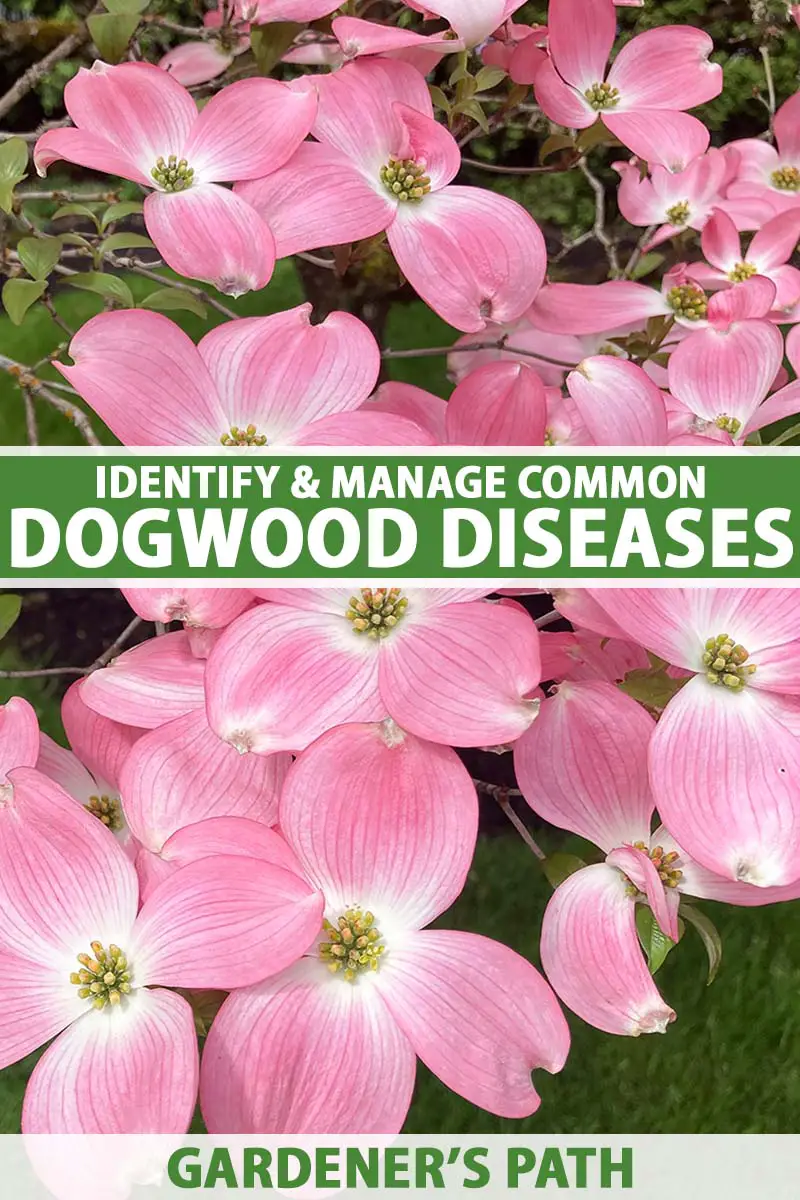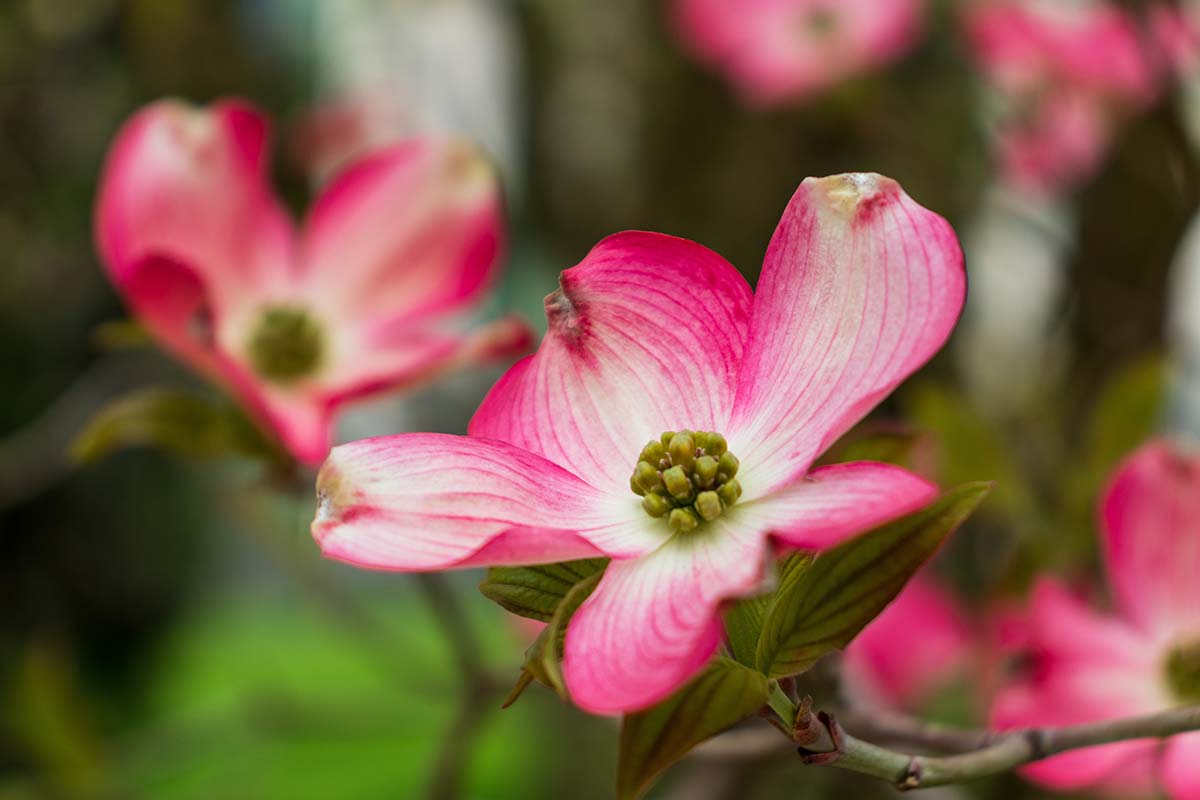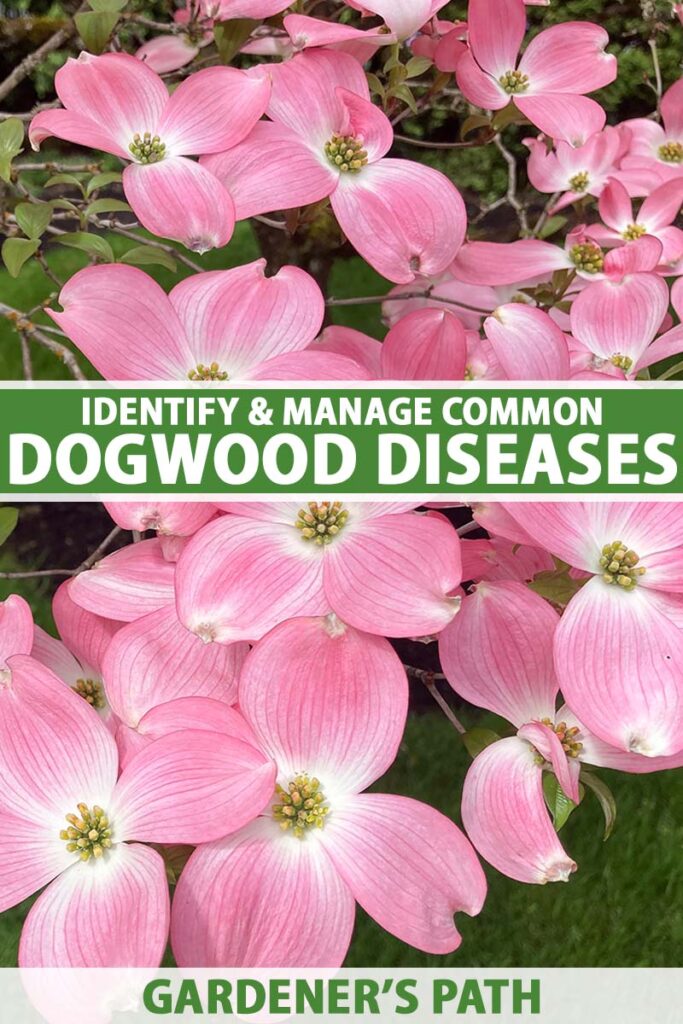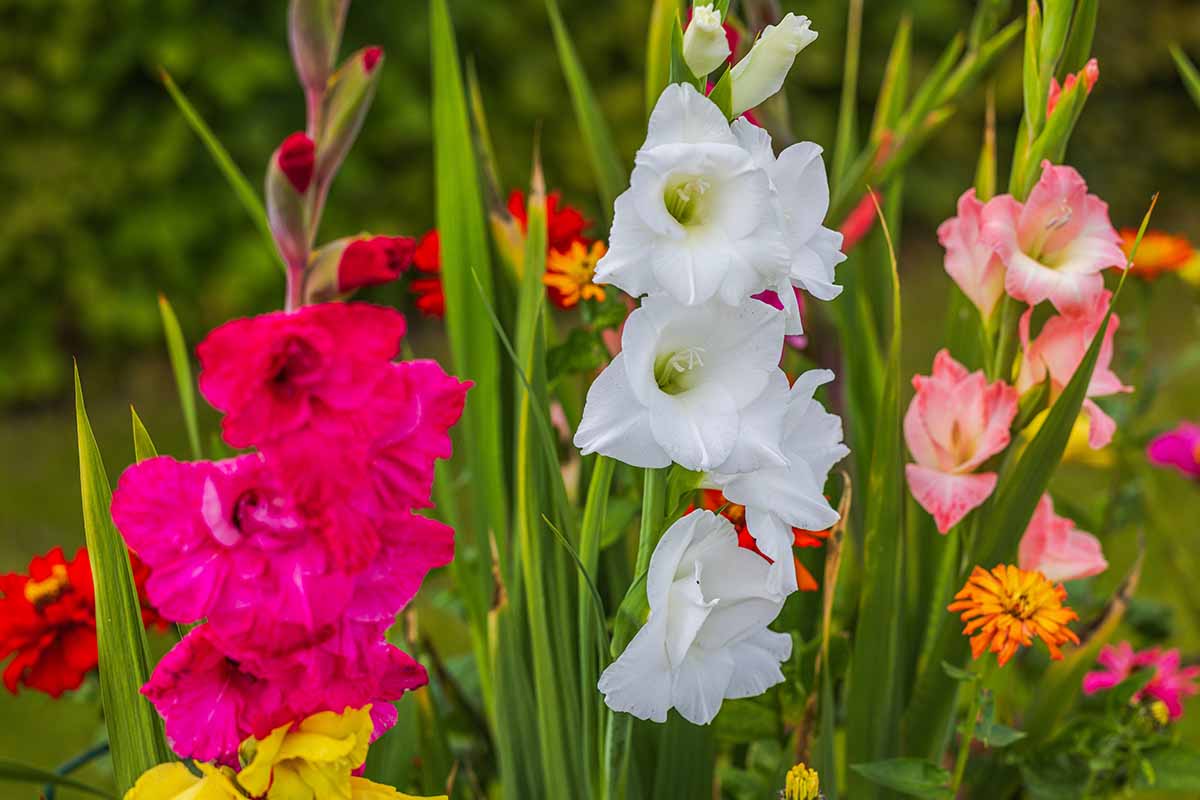
How to Identify and Treat Common Dogwood Diseases Efficiently
Identify common dogwood diseases by observing symptoms like leaf spots, cankers, and wilt. Treat them using fungicides and proper cultural practices.
Dogwood trees, known for their beautiful flowers, often suffer from diseases that can hinder their growth. Proper identification and timely treatment are crucial to maintaining their health. Common diseases include powdery mildew, dogwood anthracnose, and leaf spot. Early detection involves examining leaves, branches, and bark for unusual signs.
Effective treatments range from applying fungicides to improving air circulation and soil drainage. Regular monitoring and appropriate care can prevent severe damage and ensure your dogwood thrives. Understanding these diseases helps gardeners keep their dogwood trees healthy and vibrant.
Common Dogwood Diseases
Dogwood trees are beautiful additions to any garden. But they can suffer from diseases. Knowing the common diseases helps in keeping your dogwood healthy.
Spot Anthracnose
Spot Anthracnose is a common dogwood disease caused by the fungus Elsinoë corni. It affects leaves, twigs, and flowers.
Symptoms:
- Small, purple spots on leaves
- Twigs may develop cankers
- Flowers show reddish spots
Treatment:
- Prune affected branches
- Dispose of fallen leaves
- Apply fungicide in early spring
Powdery Mildew
Powdery Mildew is another common issue for dogwoods. It’s caused by the fungus Erysiphe pulchra. This disease mainly affects leaves.
Symptoms:
- White, powdery coating on leaves
- Leaves may curl or twist
- Growth can become stunted
Treatment:
- Increase air circulation around the tree
- Water at the base, not the leaves
- Use a fungicide as needed
| Disease | Symptoms | Treatment |
|---|---|---|
| Spot Anthracnose | Small purple spots, cankers, reddish spots on flowers | Prune branches, dispose of leaves, apply fungicide |
| Powdery Mildew | White powder on leaves, curled leaves, stunted growth | Improve air flow, water base, use fungicide |

Credit: gardenerspath.com
Symptoms To Watch For
Identifying dogwood diseases early can save your plant. Early detection helps in treating and preventing further damage. Watch for these symptoms to keep your dogwood healthy.
Leaf Discoloration
Leaf discoloration is a common sign of disease. Healthy dogwood leaves are green. Discolored leaves may appear yellow, brown, or have dark spots.
- Yellow Leaves: Indicates nutrient deficiency or root problems.
- Brown Leaves: Often a result of drought stress or fungal infection.
- Dark Spots: Could be a sign of anthracnose or other fungal diseases.
Check for these signs regularly. Early action can prevent severe damage.
Fungal Growth
Fungal growth can be a serious issue for dogwoods. Look for white or gray patches on leaves and stems.
| Fungal Disease | Symptoms |
|---|---|
| Powdery Mildew | White powdery spots on leaves |
| Anthracnose | Brown spots with purple edges |
Fungal growth can spread quickly. Treat infected plants immediately to prevent spreading.
Preventive Measures
Taking preventive measures is crucial to keep your dogwood trees healthy. By following a few simple guidelines, you can avoid many common diseases that affect dogwoods. Let’s explore some effective preventive measures to ensure the well-being of your beautiful trees.
Proper Watering
Proper watering is key to maintaining a healthy dogwood tree. Overwatering or underwatering can lead to diseases.
- Water deeply but infrequently.
- Ensure soil is well-draining.
- Use mulch to retain moisture.
Mulch helps keep the soil cool and moist. It also prevents weeds, which can steal nutrients from your dogwood. Aim to water the tree base, not the foliage. Wet leaves invite fungal diseases.
Pruning Techniques
Correct pruning techniques can prevent many diseases. It improves air circulation and sunlight penetration.
- Prune during the dormant season.
- Remove dead or diseased branches.
- Use clean, sharp tools.
Sanitize tools between cuts to avoid spreading diseases. Cutting at the right angle promotes quick healing and reduces infection risks.
Follow these tips to keep your dogwood trees vibrant and healthy. Healthy trees are less susceptible to diseases.

Credit: gardenerspath.com
Effective Treatments
Dogwood trees add charm to any garden. But they often face diseases. Knowing effective treatments can save your trees. This section covers fungicides and natural remedies for common dogwood diseases. Follow these tips to keep your dogwood healthy and vibrant.
Fungicides
Fungicides can be powerful allies. Use them to combat various dogwood diseases. Here is a table to guide you:
| Disease | Fungicide | Application Method |
|---|---|---|
| Anthracnose | Chlorothalonil | Spray on leaves every two weeks |
| Powdery Mildew | Myclobutanil | Spray on affected areas weekly |
| Crown Canker | Thiophanate-methyl | Apply to the trunk base monthly |
Always read the label before using any fungicide. Follow the instructions carefully. Overuse can harm your tree and the environment.
Natural Remedies
Many prefer natural remedies for treating dogwood diseases. These methods are safe and eco-friendly. Here are some effective options:
- Neem Oil: Mix neem oil with water. Spray it on infected leaves. This helps control fungal infections.
- Baking Soda Solution: Combine baking soda, water, and a few drops of dish soap. Spray this mixture on the tree. It helps prevent powdery mildew.
- Compost Tea: Brew compost tea and spray it on the tree. It boosts the tree’s immune system.
Ensure you apply these remedies regularly. Consistency is key. Monitor your tree’s health and adjust treatments as needed.
Soil And Nutrient Management
Dogwood trees are beautiful and add charm to any garden. To keep them healthy, proper soil and nutrient management is essential. This section will help you identify how to manage soil and nutrients effectively for dogwood trees.
Soil Testing
Before you treat dogwood diseases, start with soil testing. Soil tests reveal nutrient levels and pH balance. Use a soil test kit or contact local agricultural extensions. Collect soil samples from various spots around the tree. Mix the samples together for a composite sample. Follow the kit instructions to get accurate results.
Based on the test results, you may find deficiencies or imbalances. Adjust the soil accordingly. Proper soil management helps dogwood trees absorb nutrients better. Healthy soil leads to healthier trees.
Fertilization
Once you know your soil’s condition, it’s time for fertilization. Dogwood trees benefit from specific nutrients. Use a balanced fertilizer with nitrogen, phosphorus, and potassium. The ideal ratio is 12-4-8 or 16-4-8. Apply the fertilizer in early spring and late fall.
Follow these steps for effective fertilization:
- Measure the area around the tree’s drip line.
- Spread the fertilizer evenly around this area.
- Water the soil thoroughly after application.
Don’t over-fertilize. Too much fertilizer can harm the tree. Always follow the manufacturer’s instructions.
Here’s a quick reference table for common nutrient deficiencies and their symptoms:
| Nutrient | Deficiency Symptoms |
|---|---|
| Nitrogen | Yellowing leaves, stunted growth |
| Phosphorus | Dark green or purplish leaves, poor flowering |
| Potassium | Leaf edges turning brown |
Proper soil and nutrient management can prevent many dogwood diseases. Healthy soil and balanced nutrients are key to vibrant dogwood trees.
Environmental Factors
Understanding the environmental factors that affect dogwood trees is crucial. This ensures the healthy growth and prevention of diseases. The surrounding environment plays a pivotal role in the tree’s health. Let’s delve into how climate and sunlight impact dogwood trees.
Climate Influence
Climate significantly impacts dogwood trees. They thrive in USDA hardiness zones 5-9. Extreme cold or heat can stress the tree, making it susceptible to diseases. A consistent and moderate climate is ideal. Sudden weather changes can weaken the tree’s immune system.
Here is a table summarizing the optimal climate conditions:
| Climate Condition | Optimal Range |
|---|---|
| Temperature | 60-75°F (15-24°C) |
| Humidity | Moderate |
| Rainfall | 1-2 inches per week |
Ensure your dogwood is planted in a location that matches these conditions. This can help prevent many common dogwood diseases.
Sunlight Requirements
Dogwood trees need the right amount of sunlight to stay healthy. They prefer partial shade to full sun. Too much shade can lead to poor growth and disease. Too much sun can cause leaf scorch.
Here are some tips to manage sunlight exposure:
- Plant dogwoods in a spot that gets morning sun and afternoon shade.
- Avoid areas with intense, direct sunlight all day.
- Use mulch to retain soil moisture and protect roots from extreme heat.
By managing sunlight exposure, you can keep your dogwood tree healthy and disease-free.
Long-term Care Strategies
Ensuring the health of your dogwood tree involves ongoing commitment. Long-term care strategies help prevent common diseases. This section covers regular monitoring and seasonal maintenance.
Regular Monitoring
Regular monitoring is crucial for early disease detection. Inspect your dogwood tree weekly. Look for signs of distress.
- Check leaves for spots or discoloration.
- Examine branches for any unusual growths.
- Observe the bark for cracks or peeling.
Document your findings in a journal. This helps you track changes over time. Early detection allows prompt treatment.
Seasonal Maintenance
Seasonal maintenance is essential for a healthy dogwood tree. Each season brings its own tasks.
| Season | Tasks |
|---|---|
| Spring |
|
| Summer |
|
| Fall |
|
| Winter |
|
These tasks help keep your dogwood tree healthy year-round. Proper care reduces the risk of common diseases.

Credit: gardenerspath.com
Professional Help
Dogwood trees can fall victim to various diseases. Sometimes, professional help is necessary to ensure your tree’s health. Here’s when and why you should seek expert advice.
When To Consult An Arborist
Watch for signs of distress in your dogwood tree. Wilting, unusual spots, or leaf discoloration can indicate disease. If symptoms persist, consult an arborist.
- Persistent leaf spots or blotches
- Unusual bark discoloration
- Wilting or drooping branches
- Sudden loss of foliage
An arborist can diagnose and treat these issues. They have the tools and knowledge to address tree diseases effectively.
Diagnostic Services
Arborists offer various diagnostic services to identify dogwood diseases. These services can be crucial for accurate treatment.
| Service | Description |
|---|---|
| Visual Inspection | Arborists examine the tree for visible symptoms. |
| Soil Testing | Tests determine soil health and nutrient levels. |
| Lab Analysis | Samples are sent to labs for detailed diagnosis. |
Using these methods, arborists can pinpoint the exact disease. This ensures your dogwood receives the most effective treatment.
Remember, early diagnosis leads to better outcomes. Regular check-ups with an arborist help maintain your dogwood’s health. Professional help can save your tree from severe damage.
Frequently Asked Questions
What Does A Diseased Dogwood Tree Look Like?
A diseased dogwood tree shows spotted, discolored leaves, dying branches, and peeling bark. You might see cankers and stunted growth.
How Do You Treat A Diseased Dogwood Tree?
To treat a diseased dogwood tree, prune affected branches, apply fungicide, ensure proper watering, and improve soil drainage. Regularly inspect for pests.
What Does Fungus Look Like On A Dogwood Tree?
Fungus on a dogwood tree looks like powdery mildew, leaf spots, or cankers. Leaves may turn yellow or brown.
What Does Dogwood Anthracnose Look Like?
Dogwood anthracnose causes tan spots with purple edges on leaves. Infected leaves wilt, curl, and die. Branches develop cankers.
Conclusion
Identifying and treating dogwood diseases is crucial for healthy trees. Regular inspections help catch issues early. Use proper treatments to prevent disease spread. Follow expert advice to ensure your dogwood thrives. Stay vigilant and proactive to maintain beautiful, disease-free dogwoods in your garden.
Happy gardening!

